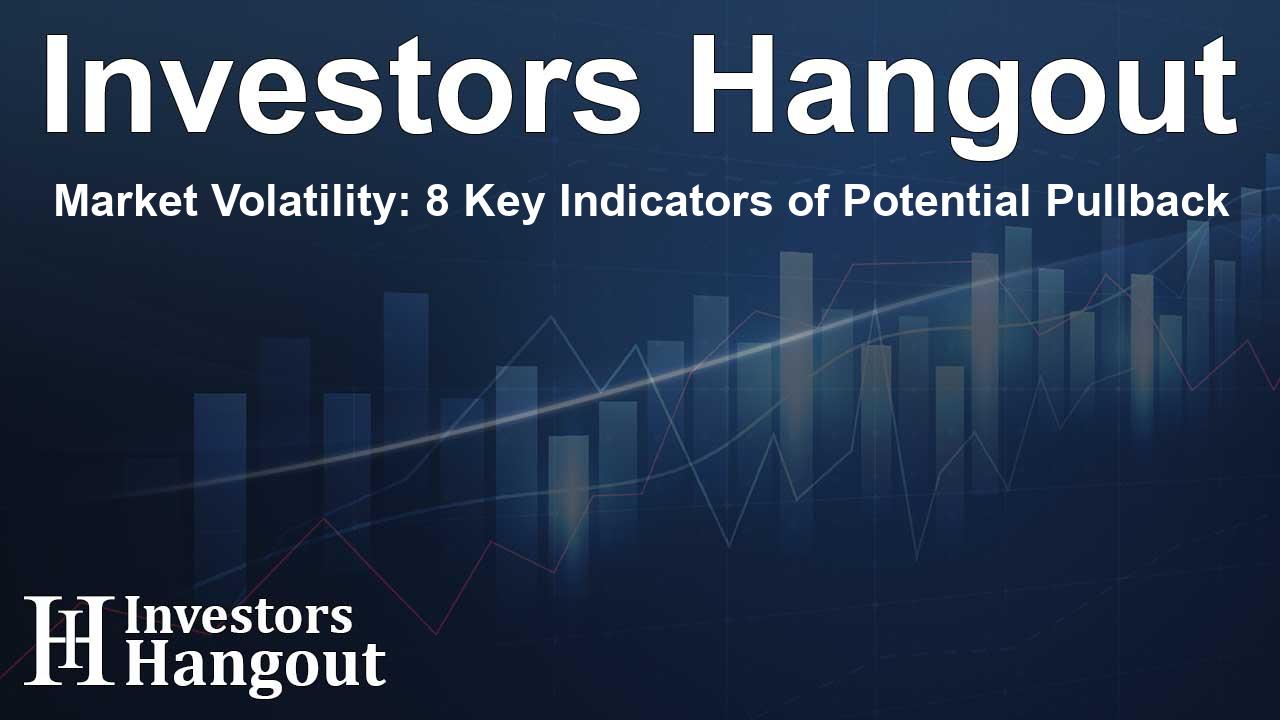Market Volatility: 8 Key Indicators of Potential Pullback

Market Overview and Recent Trends
U.S. stock markets experienced a decline recently, with noticeable movements in key economic indicators. The surge in the 10-year Treasury yield has raised concerns, marking its first climb past 4% since earlier months. This uptick has set a cautious atmosphere as analysts anticipate important inflation data and the commencement of the earnings season.
Prominent indices reflected this trend; the Dow Jones Industrial Average registered a drop of 0.9%, translating to a loss of around 400 points following its recent record high. Similarly, the S&P 500 and NASDAQ Composite also witnessed declines of nearly 1% and 1.2%, respectively. The pullback appears to be significantly influenced by major tech stocks pulling the entire market downwards.
1. Examining the S&P 500's Movement
Recently, the S&P 500 index dropped by 90 basis points, closing at 5695. This movement reintroduces the zero gamma level, a critical area of support separating the gap created by the Federal Open Market Committee (FOMC) from the current trends. A further decline could prompt an island reversal top, with potential movement back towards 5620. A drop below this mark might lead the index heading towards 5400, provoking further market apprehension.
2. Nasdaq 100 Takes Shape
In analyzing the technical formations, the Nasdaq 100 seems to be forming either a diamond top or a head and shoulders pattern. These formations typically imply a downward correction back to approximately 18,480, which could denote a significant shift, especially considering the bear pennant pattern that has been developing since the July highs.
3. Currency Market Signals Impact on Equity
In the currency market, the USD/CAD pair has recently closed at its highest level since mid-August, with resistance expectations at 1.36. Historically, an increase in USD/CAD correlates with a decline in the S&P 500. The current trend suggests that this relationship will hold, potentially exerting downward pressure on equity markets as traders react.
4. Increased Volatility Indicators
A notable spike in the 1-month implied correlation index signals increased market volatility. As share prices drop, implied volatility often rises across markets, leading to greater correlation among stocks. This higher correlation is a sign that we might see further downward movement in the major indexes.
5. High-Yield Bonds Reflect Market Sentiment
In one of the more alarming indicators, the HYG high-yield bond ETF dropped considerably yesterday, marking a significant decline after a period of stability. This trend is pivotal to observe, as it reflects the market's credit spread situation. A sustained drop may indicate increasing risk aversion among investors.
6. Biotech Sector's Vulnerability
The biotech sector is seeing challenges as well, with the XBI ETF showing signs of potential breakdown. The ETF has encountered a quadruple top around $101.25 and faces a critical moment where a break could signify a return to prices as low as $87, particularly if the current trend of rising interest rates continues unimpeded.
7. Adobe Faces Market Challenges
Adobe has seen significant declines, with its shares dropping nearly 4% to about $487. The company has broken critical support levels at $505, raising concerns about filling earlier gaps from June, specifically looking towards $468 as the next possible target.
8. Alibaba's Potential Slowdown
Alibaba's stock performance has surged following recent announcements about stimulus measures in China. However, from a technical standpoint, the stock is now viewed as overstretched. There is considerable speculation surrounding future actions from the Chinese Communist Party, making it crucial for investors to exercise caution and not rely solely on assumptions.
Frequently Asked Questions
What major stock indices have seen declines recently?
The Dow Jones Industrial Average, S&P 500, and NASDAQ Composite have all recorded declines, influenced by rising Treasury yields and tech stock performance.
Why is the S&P 500 considered a crucial indicator?
The S&P 500 is often viewed as a barometer for overall market health, reflecting the performance of 500 of the largest companies listed on domestic stock exchanges.
How does the USD/CAD currency pair affect the stock market?
Typically, when USD/CAD rises, it tends to exert downward pressure on the S&P 500, illustrating a broader correlation between currency strength and equity performance.
What significance do the patterns in the Nasdaq 100 hold?
The diamond top or head and shoulders patterns suggest potential downward reversals, indicating investor caution and the possibility of further declines in the index.
What indicators are vital to monitor for market changes?
Investors should closely watch the implied volatility index, high-yield bond performance, and sector-based movements, particularly in biotech and tech stocks, to gauge market sentiment.
About The Author
Contact Lucas Young privately here. Or send an email with ATTN: Lucas Young as the subject to contact@investorshangout.com.
About Investors Hangout
Investors Hangout is a leading online stock forum for financial discussion and learning, offering a wide range of free tools and resources. It draws in traders of all levels, who exchange market knowledge, investigate trading tactics, and keep an eye on industry developments in real time. Featuring financial articles, stock message boards, quotes, charts, company profiles, and live news updates. Through cooperative learning and a wealth of informational resources, it helps users from novices creating their first portfolios to experts honing their techniques. Join Investors Hangout today: https://investorshangout.com/
The content of this article is based on factual, publicly available information and does not represent legal, financial, or investment advice. Investors Hangout does not offer financial advice, and the author is not a licensed financial advisor. Consult a qualified advisor before making any financial or investment decisions based on this article. This article should not be considered advice to purchase, sell, or hold any securities or other investments. If any of the material provided here is inaccurate, please contact us for corrections.
